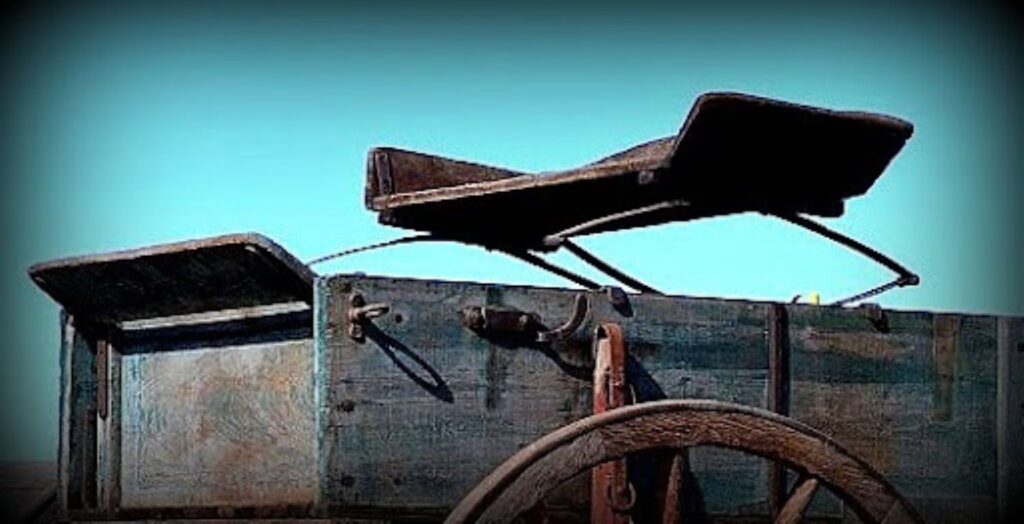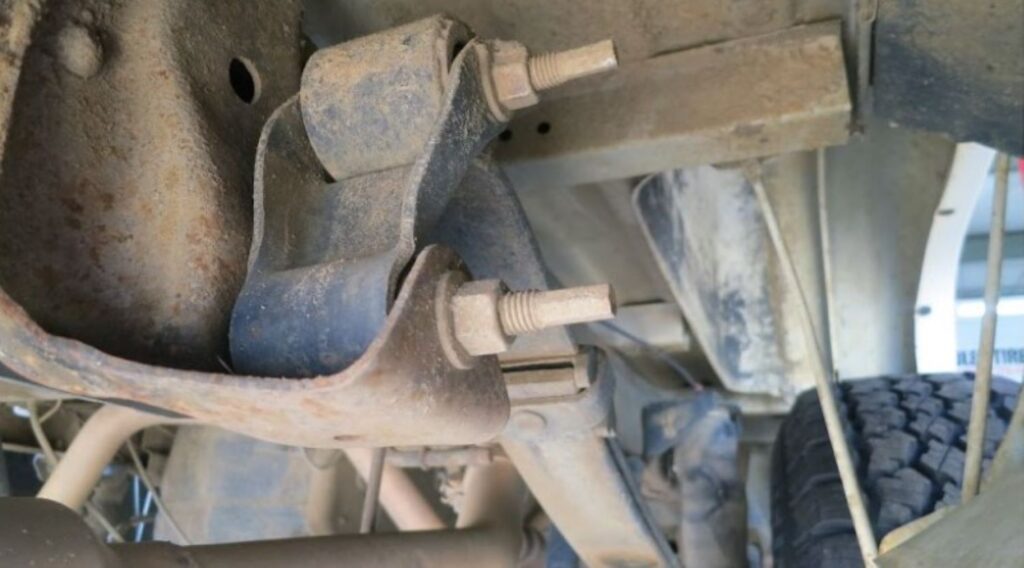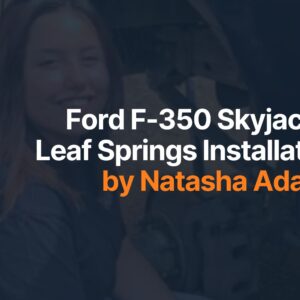The leaf spring suspension is one of the earliest and oldest types of suspension. While no longer produced for the latest car models, leaf springs are still used in commercial trucks. Many older vehicles also have leaf springs in their suspension. If you plan to drive a car or truck that uses leaf springs, it’s a good idea to learn about the old but reliable suspension system.

What Is A Leaf Spring?
A leaf spring is one or more metal plates or strips that are long, narrow, thin, and curved like an arc. The plates stack atop each other lengthwise, and a bolt passes through the center of the piled strips to secure them together.

Leaf springs with only one plate are called mono-leaf springs. If the leaf spring has two or more plates, it’s a multi-leaf spring.
Leaf springs attach to the chassis and both ends of the rear axle. In most vehicles with leaf springs, the axle is either centrally mounted or slightly offset.
Some leaf spring suspensions are transversely mounted. They span the vehicle’s width. Other leaf springs are longitudinal, running along the vehicle’s length.
Many models combine leaf springs with other suspension types. Usually, leaf springs support the rear half while coil springs do the same job for the front end.
How Do Leaf Springs Work?
Leaf springs do the same job as other suspension types. They compensate for the vertical movements of the wheels as the latter cross uneven road surfaces.


When the vehicle drives over a rough surface, it applies pressure on the leaf springs. The springs respond by flexing in the appropriate direction, relieving the pressure while supporting the vehicle’s weight. The rear of the leaf spring will have a hinge link so the spring can extend as it is loaded.
What Are Leaf Springs’ Strengths?
Let’s take a look at what makes a leaf spring suspension appealing to drivers and manufacturers:
Weight and Back Load Capacity
A leaf spring suspension system excels at bearing heavy-duty loads on the vehicle’s rear. While coil springs can also handle these loads, other factors make leaf springs the more economical choice without sacrificing performance and durability.
Many commercial vehicles, passenger trucks, and vans still use a leaf spring suspension to save on various costs while benefiting from good load capacity.
Simplicity
Leaf springs are simple and direct systems. They directly support the spring assembly’s axle. They don’t need the complex arrangements required by coil springs or other types of suspension.
Weight and Space Saving
Thanks to its simpler construction and relatively few parts, the leaf spring is lighter and occupies less space than other suspension systems. It can fit in cramped areas and doesn’t add excessive weight to the vehicle.
Lower Cost
Leaf spring suspensions are more affordable to acquire, repair, and maintain in good condition. Their simplicity keeps their production cost low, so you spend less on new and replacement parts. It’s also easier to check a leaf spring suspension for issues, identify the faulty part, and replace it.
What Vehicles Benefit From A Leaf Spring Suspension?
While car manufacturers have mostly replaced leaf springs with coil springs in their newer models, many vehicles still have the older suspension system. You can also replace the existing coil spring suspension with its leaf counterpart.
Here are the vehicles that can get the most out of leaf springs:
Vehicles With Solid Axles
Vehicles with solid axles usually have leaf springs. Indeed, a leaf spring suspension requires a solid axle setup.
But what is a solid axle? It’s a rigid beam that joins the wheels on either side of the vehicle. The solid axle suspension’s axle housing holds the bearings, gears, and other parts that drive the car or truck forward. While the axle housing also contains the axle shaft that transmits engine power to the wheel, the differential mounts under the axle.
Solid axles can also connect to the vehicle’s frame with coil springs or air springs. However, they often use leaf springs because the latter work really well with them.
Sports Cars
Vehicles that put a premium on total weight and internal space can benefit from using leaf springs. Take sports cars, for example. They need to minimize their size and weight, so they need compact suspensions that weigh as little as possible.
The Chevrolet Corvette is one of the most famous sports car models with a leaf spring suspension. Many generations of Corvettes feature an independent rear suspension with leaf transverse springs. This setup finally changed in 2020 when Chevrolet introduced the Corvette C8. The new Corvette replaced the traditional rear leaf springs with coil spring equivalents.
Trucks and SUVs
Many trucks, like the Ford Ranger and Toyota Tacoma, have rear suspensions with leaf springs. Only recently did these models start offering options for rear coil springs.
SUVs also use leaf springs in their rear suspensions. The Volvo XC90 features transverse leaf springs. However, its replacement EX90 EV replaces the rear suspension with a modern multi-link design.
Commercial Vehicles
Many commercial vehicles still use leaf springs. This older suspension system is affordable, dependable, and rugged, making it appealing for companies that want to keep costs under control.
Leaf springs can still be used in vans like the Mercedes Sprinter. The lighter suspension improves fuel economy and frees up weight as extra load capacity.
Leaf springs have lasted as long as they have because of how their advantages work together to provide an affordable yet effective solution to a vehicle’s suspension. We’ll probably still see them in the future.
Where to Get High-Quality Leaf Springs for Your Vehicle
If you want to replace the existing coil with a leaf spring suspension, it’s best to get a high-quality replacement. Look no further than CarParts.com, as we have leaf springs built to last.
We sourced our leaf springs from well-known manufacturers, so they’re guaranteed to last. We also made it a priority to provide the best online shopping experience, as it takes just a few clicks when you shop from our website. Use our vehicle selector to check for fitment, and toggle our search filters to narrow down your selection based on brand or price range.
Our distribution centers utilize advanced technologies to ensure that the shipping process is as fast and as efficient as it can be. You can even get your order in as quick as two business days.
Shop for high-quality leaf springs today at CarParts.com!
Any information provided on this Website is for informational purposes only and is not intended to replace consultation with a professional mechanic. The accuracy and timeliness of the information may change from the time of publication.




































We’re can I find a leaf spring for a 1993 leaf spring mono for a Buick regal I’ve looked all over please Help